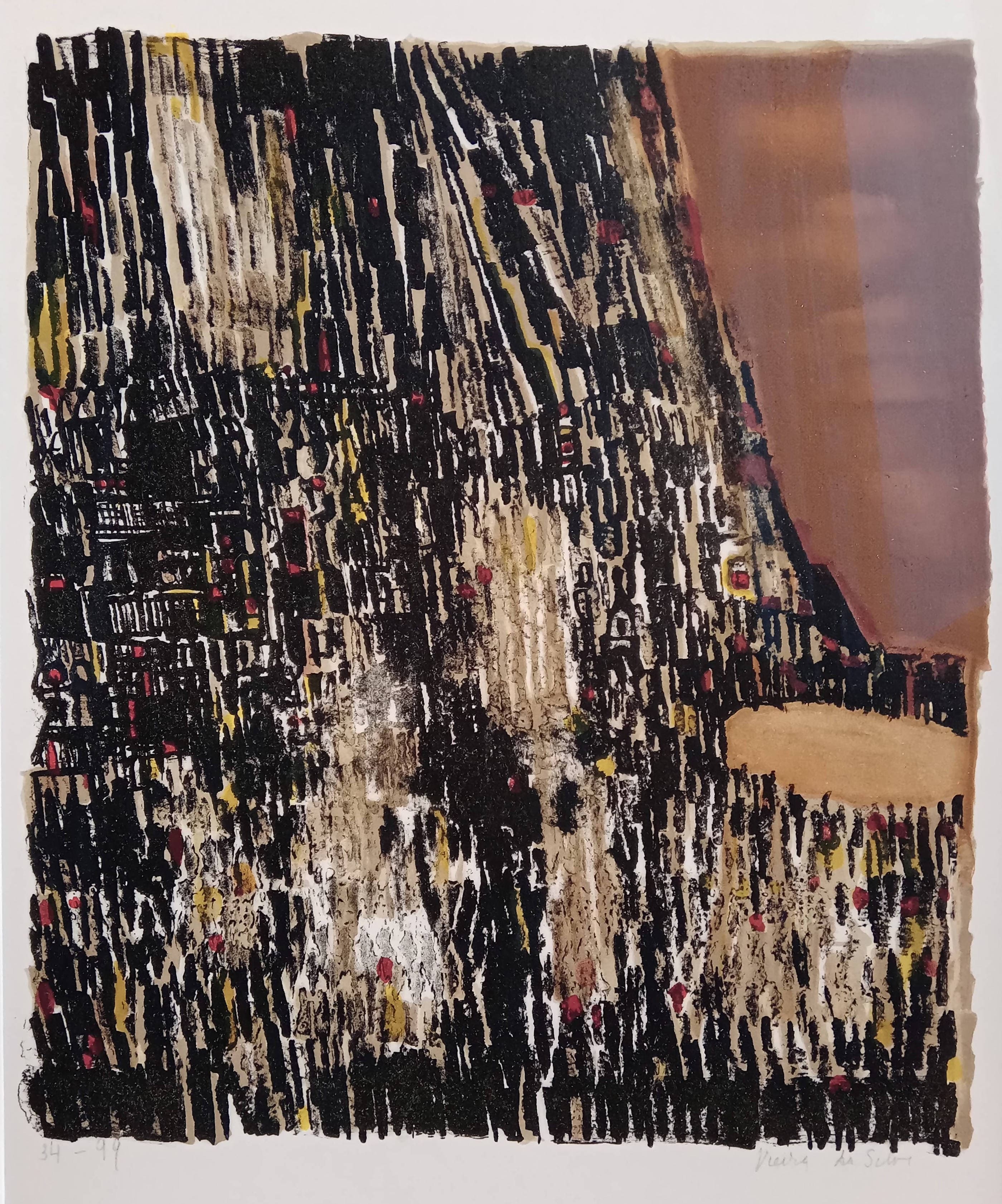
Who was Maria Helena Vieira da Silva?
Throughout the 20th century, the lives of many contemporary artists were characterized by cultural exchange, intellectualism, innovation, experimentation, travel in Europe and artistic fervor. The painter Maria Helena Vieira da Silva participated in this environment, although his life and work had unique and non-transferable nuances.
Despite the clarity of the artistic influences that Vieira da Silva received, like cubism, abstraction, tachism or surrealism, his work continues to be a stylistic ensemble that is certainly unclassifiable. Despite this, aligning ourselves with general criticisms, we will say that Vieira da Silva He was, above all, a great abstractionist.
Origins of Vieira da Silva
He was born in 1908 into a family accustomed to traveling, especially around Europe. At a young age, he visited key countries such as Italy, England or France, the latter being one of the most important for the future. The path that leads Vieira da Silva becoming a "painter of obsessive memories" and a "weaver of threads of light" as some media call him, begins with two fundamental facts: the loss of his father at the age of two and his education in the arts and in music since his childhood.
He began his artistic training at the Lisbon School of Fine Arts, where he was born, finishing it in 1928 and moving his residence to Paris, obtaining dual nationality. At that time, Paris was the capital of the contemporary art world, in the middle of the interwar period, and was certainly attracted by the novelty and artistic enthusiasm of the moment.
Vieira da Silva is commonly identified with the Paris School, which art critic André Warnod describes as an "international community of foreign artists residing in Paris whose creations do not subscribe to any ism". It is estimated that at this time, Paris was home to twenty independent art rooms and a hundred art galleries, which, without a doubt, translated into an opportunity for Vieira da Silva. After some first steps as a sculptor at the Academy of Grande-Chaumiere and the artist Bourdelle, Vieira da Silva decided on the genre of the painting. Attended cubist Fernand's classes Léger and met the engraver Stanley William Hayter, the most prestigious of the entire 20th century.
Around the 1930s, Vieira da Silva he absorbed the influence of the abstract expression of the Circle and Square group (Cercle et Carré) having already experienced other influences such as the fauvist Otho Friesz or the cubist Charles Dufresne, whose echoes resonate in his work. With similar inspirations, the intimate look of Vieira da Silva, which is worth browsing, quickly conquered the world.
The look of Vieira da Silva
Your look, or rather, the memory of Vieira da Silva hides an affectionate spirit beneath the composite patterns of his canvases that end up triumphing sooner than later. Jeanne Bucher, owner of Galeria Jeanne Bucher, exhibited for the first time Vieira da Silva in 1933, creating the first acquisition of his work a year later.
In Vieira da Silva The fauvism of the beginning of the century resides in some way, the visual strength and flat color juxtaposition make it clear. But it lacks the application of "emancipated" representational stains and the intrinsic "anger" of fauvism, although it doesn't need it either. His most important lesson was probably given by Cézanne, the “painter of painters” with whom he Vieira da Silva she learned to be an artist that lasted over time and to navigate the transition that modern painting entailed.
The imaginary of Vieira da Silva it takes place in a dynamism where the parts of the painting do not completely eclipse the composition. He experiments with a fusion of abstract and figurative methods, with the agglutination of elements of synthetic cubism and a use of color reminiscent of primitivism. But, above all, he experimented with his own memories and his autobiographical imagination, and gives us a beautiful Villa des Camèlias, a Ripolin, an echo perhaps of Paul Klee in 1932's Still Life Blue.
With the Second World War, his life took a radical turn and he had to emigrate to Brazil to spend seven fruitful years in contact with the constructivist painter Joaquín Torres García, another great master. In the post-war period, its aesthetics removed the ravages of the conflict, in addition to rescuing culture with cities in ruins, cities with towers, the street, a spiral, an enigma, the maisons, the Bibliothequè, the interior of a spiral, in a total revolution that, despite the ambiguity, synthesized the first avant-garde of the century.
Notable works by Vieira da Silva
At an international level Vieira da Silva received great recognition. An example of this is the International Guggenheim Prize, the work for the church of Saint Jacques in Reims in 1963 where he developed a magnificent stained glass window with a faithful arrangement of his usual ocher chromaticism, the Grand Prix National des Arts in Paris, an accolade in São Paulo Biennial in 1989 or his appointment as a member of the National Academy of Fine Arts of Portugal. Furthermore, there have been retrospective exhibitions of Vieira da Silva in Germany, Italy, Portugal, Spain and France, among other countries. His work partially dies with him in 1992, although his legacy is eternal. Among his most important works, some stand out that transport us to these post-war environments such as The Corridor (1950), La Gare Inondeé (1956), The Chess Game (1945), des miroirs (1971), Bibliothéque en Feu (1974) and his own self-portrait or Self Portrait (1942).






